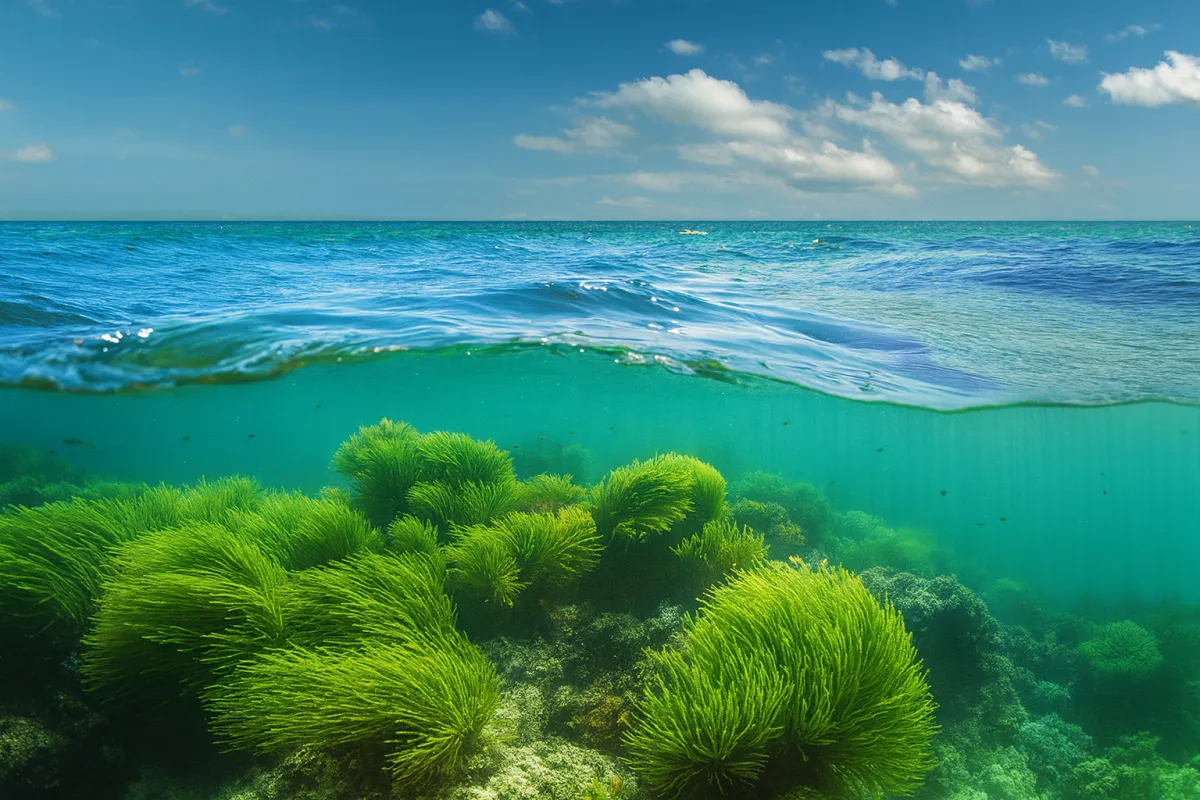
Natures Mighty Painters
Science of the Sea | Phytoplankton: Nature’s Tiny but Mighty Painters
Drifting unseen in the ocean’s currents are organisms so small they escape the naked eye, yet their influence rivals forests and mountains. Phytoplankton—the “plants” of the sea—are the unsung painters of Earth’s canvas. With sunlight and chlorophyll, they create oxygen, sustain life, and even turn the night ocean into a glowing dreamscape.
Nature’s Painters
Like terrestrial plants, phytoplankton photosynthesize: using sunlight, water, and carbon dioxide to create energy. In doing so, they regulate Earth’s carbon balance and produce about half of the planet’s oxygen. Every breath we take carries their signature.
A Diverse Cast
“Phytoplankton” is not one species but a collective. Diatoms wear glass-like shells. Dinoflagellates sport flagella for movement—and some shimmer with light. Cyanobacteria, among Earth’s oldest life forms, still thrive as vital oxygen-makers. Together, these groups weave the foundation of marine ecosystems.
Food for the Ocean
Tiny as they are, phytoplankton sustain giants. Zooplankton feast on them, fish feed on zooplankton, whales swallow vast clouds of both. Remove phytoplankton, and the marine food web collapses.
Bioluminescent Wizards
Certain species—especially dinoflagellates—possess the ability to glow when disturbed. Their flickering blue-green light transforms waves into stars. On dark beaches, footsteps spark trails of fire, kayaks leave glowing wakes, and the sea itself becomes luminous poetry.
Climate Regulators
By absorbing carbon dioxide, phytoplankton act as global regulators. They draw greenhouse gases from the air, store carbon in the deep sea when they die, and help buffer Earth’s warming climate. Without them, the atmosphere would feel far heavier.
Invisible Giants
Though microscopic, their sheer abundance makes phytoplankton one of the planet’s dominant forces of photosynthesis. Alongside rainforests, they form the lungs of Earth—reminding us that what is unseen can be colossal.
Changing Oceans
Phytoplankton populations shift with temperature, nutrient supply, and currents. Climate change threatens this balance. Warmer waters and acidification already alter distributions, reshaping ecosystems and challenging the resilience of the marine food web.
In the end, phytoplankton are both artists and architects—painting the sea with color and light, while sustaining life from the smallest crab to the largest whale.
Where to Witness Bioluminescent Phytoplankton’s Magic
Mosquito Bay, Puerto Rico – The world’s brightest bioluminescent bay. Paddle at night to watch electric-blue sparkles bloom in your wake.
La Jolla, California – At certain times of year, the surf glows under your paddleboard or kayak.
Indian River Lagoon, Florida – Kayak tours reveal glowing waters along the Space Coast.
Matsu Islands, Taiwan – Waves shimmer with green and blue light, painting the shoreline with otherworldly beauty.
Krabi, Thailand – Walk the beaches by night to leave glowing footprints in the sand.
Jervis Bay, Australia – A summer spectacle of glowing seas under southern skies.
Holbox Island, Mexico – A hidden treasure for bioluminescent adventures on calm nights.
Vaadhoo Island, Maldives – Famous for its “Sea of Stars,” where glowing phytoplankton light the shoreline.
Toyama Bay, Japan – Known for glowing firefly squid, another dazzling bioluminescent wonder.
Mission Bay, California – Comb jellies shimmer with rainbow light, adding to the show.
No matter where, bioluminescence is a reminder that the ocean holds a living light show—tiny organisms turning survival into spectacle.